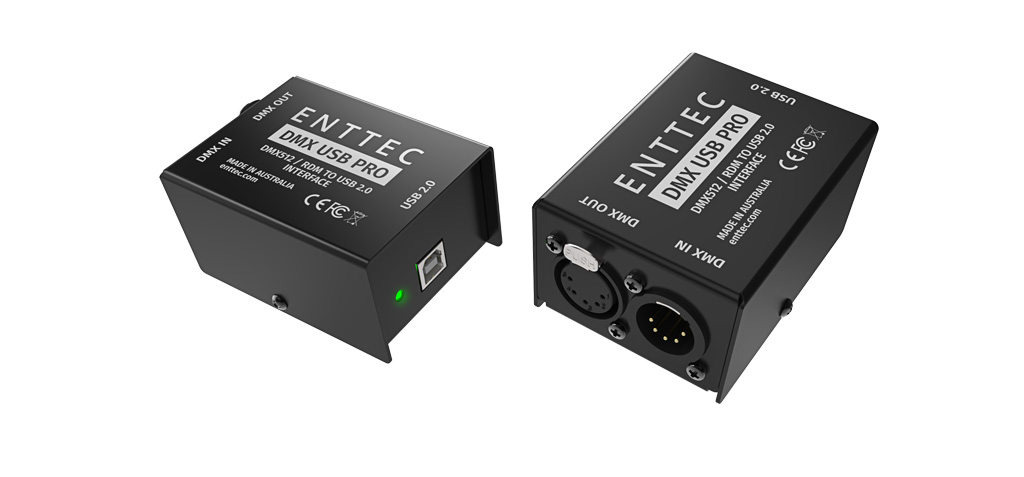Dmx Usb Pro Driver For Mac
Art-Net, sACN/E1.31 and DMX512 are the most commonly used lighting control protocols with roots in simple theatrical light dimming. Install windows on asus chromebox windows 10. These days almost any lighting or stage effect equipment may be controlled using these protocols including moving lights, LED screens, fog machines and laser displays.
Industry Standard USB 2.0 Support on Windows PC and Mac OSX, and popular linux flavors. Thanks to FTDI drivers, which enable the usb communication between your computer and DMX USB PRO, it will work on most of the computers. Even Raspberry Pi is now supported. DMX Input or Output. Open DMX USB SKU: 70303 Maximum value from minimum spend. Bells and whistles are great if you need them. If you don’t, you want maximum value from minimum spend. Open DMX USB gives you just what you want, and need in a USB-based interface for controlling your DMX lights.
DMXking USB DMX and eDMX hardware is designed for use with computer based show control software. It replaces an entire lighting console allowing the user to perform sophisticated shows with little more than a laptop. There are many free and commercial software packages available and by selecting Art-Net or sACN as your DMX device compatibility is guaranteed even with high end lighting consoles. For USB DMX applications our compatibility with the Enttec Pro protocol assures compatibility in almost every situation.
We've made a list of pacakges and also highlight several popular ones with additional information about setup and configuration.
USB port types and names
USB (Universal Serial Bus) is an industry standard for connecting computers and other devices. It's available with many types of ports, and each type has a unique shape. On Mac, USB is available with these ports, depending on your Mac model:
USB-A
Type USB-A ports are commonly called USB, USB 2, or USB 3 ports, depending on the USB specification they support. They aren't reversible, so a USB-A connector plugs into the port only when oriented correctly.
USB-C
Type USB-C ports are available on Mac as standard USB-C ports, Thunderbolt 3 ports, and Thunderbolt / USB 4 ports. They all look the same, and the connector plugs into the port in either orientation.
Learn more about identifying the ports on your Mac, as well as the adapters and cables you can use to connect older devices to type USB-C ports.

USB specifications
USB specifications are important primarily when you want the most speed and power for your USB device, or your device needs more power or is using too much power. Every USB port supports a particular USB specification, which determines the port's maximum>USB specifications on MacData transferPower deliveryUSB 4Up to 10 GbpsUp to 15W at 5VUSB 3.1 Gen 2
Also known as USB 3.2 Gen 2
Up to 10 GbpsUp to 15W at 5VUSB 3.1 Gen 1
Also known as USB 3.2 Gen 1 or USB 3
Up to 5 GbpsUp to 900 mA at 5VUSB 2.0
Up to 480 MbpsUp to 500 mA at 5VUSB 1.1
Up to 12 MbpsUp to 500 mA at 5V
To learn which specification is supported by a type USB-A or type USB-C port on your Mac model:
- Choose Apple menu > About This Mac, click Support, then click Specifications.
- Check the System Information app for more details, including about USB devices connected to USB ports on your Mac. Select USB in the sidebar, then select a USB bus on the right.

Get the best performance from your USB devices
USB specifications all work with each other, but speed and power are limited by the cable or device that uses the earliest specification. For example, if you connect a USB 3 device to USB 2 port, your device is limited to USB 2 speeds, and it can't draw more power from the port than can be delivered over USB 2. In other words, to get the best performance, make sure that the USB port on your Mac and the USB cable to your device meet or exceed the USB specification of the device itself.
If your Mac doesn't recognize a USB device after you plug it into your Mac:
Usb Pro Driver Download
- Check all connections: Unplug the device from your Mac, then plug it back in, and make sure that all cables and adapters are securely connected at both ends. Test with another cable or adapter, if available.
- Plug the device directly into your Mac instead of a USB hub or other device, and if necessary test with a different USB port on your Mac or device.
- Some devices need their own software, such as drivers or firmware. Others work without additional software. Check with the maker of your device, and install all available Apple software updates as well.
- If your device came with an AC power adapter, use it. Some devices can be powered by the USB port on your Mac. Others need more power than your Mac can provide.
- Restart your Mac.
Learn more
Dmx Usb Pro Driver For Mac Free
- USB 3 devices can create wireless interference that affects Wi-Fi and Bluetooth devices. Learn how to resolve Wi-Fi and Bluetooth issues caused by wireless interference.
- Mac notebook computers with USB-C, Thunderbolt 3, or Thunderbolt / USB 4 can charge over that port using a compatible USB-C power adapter and cable.